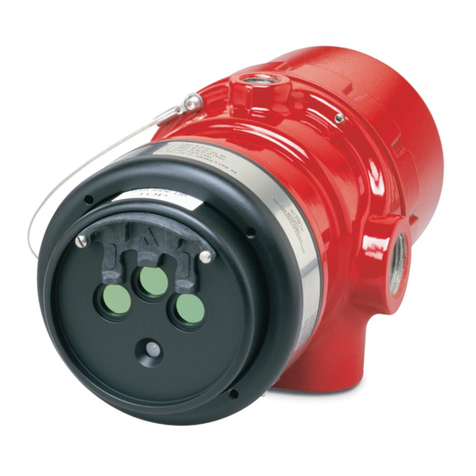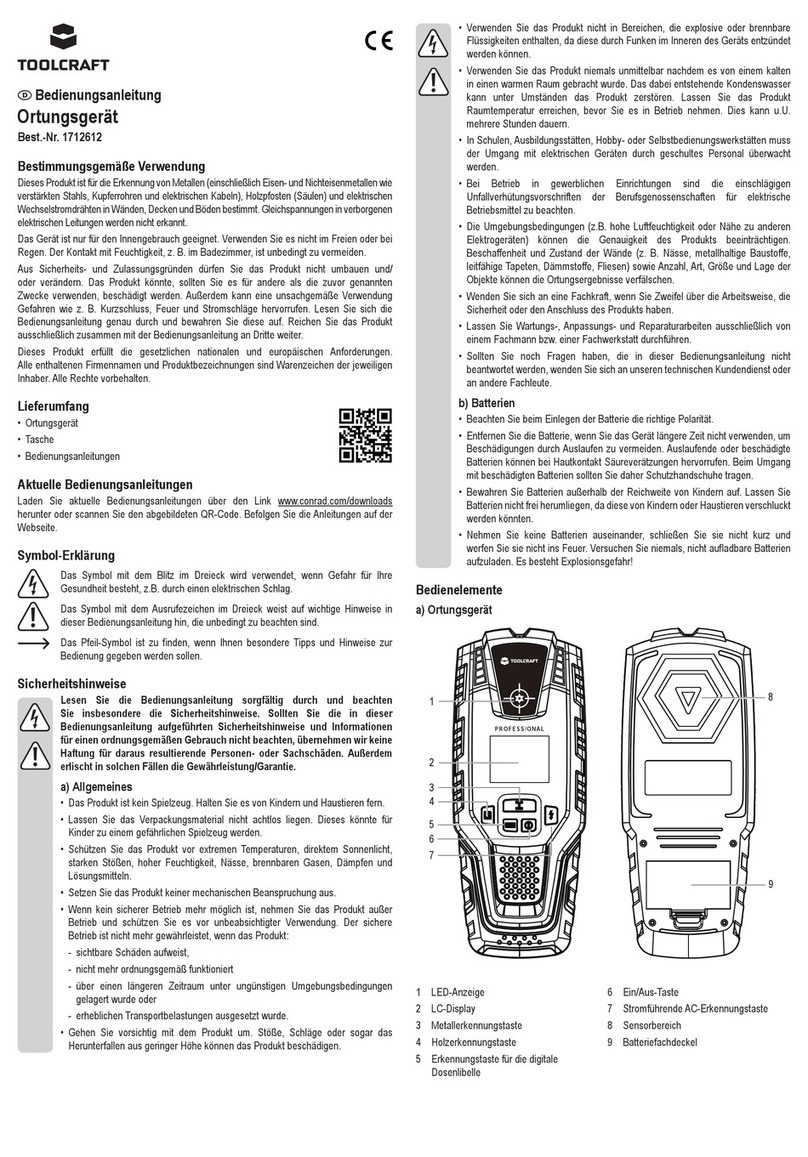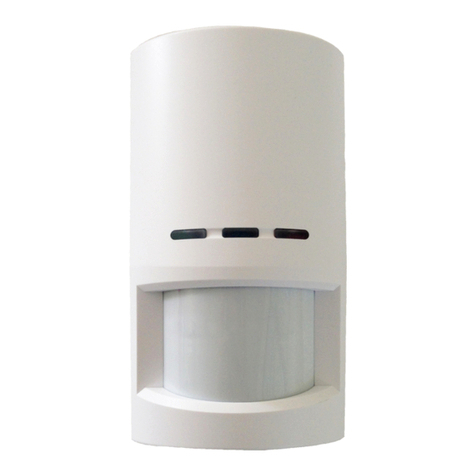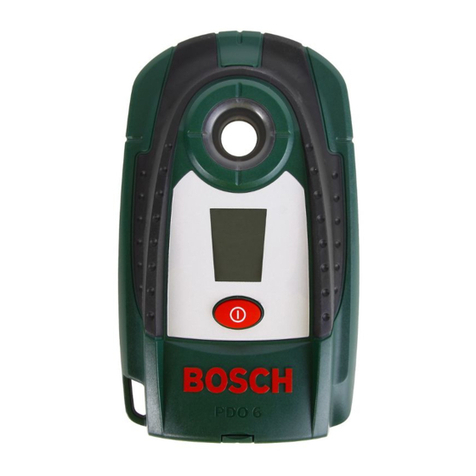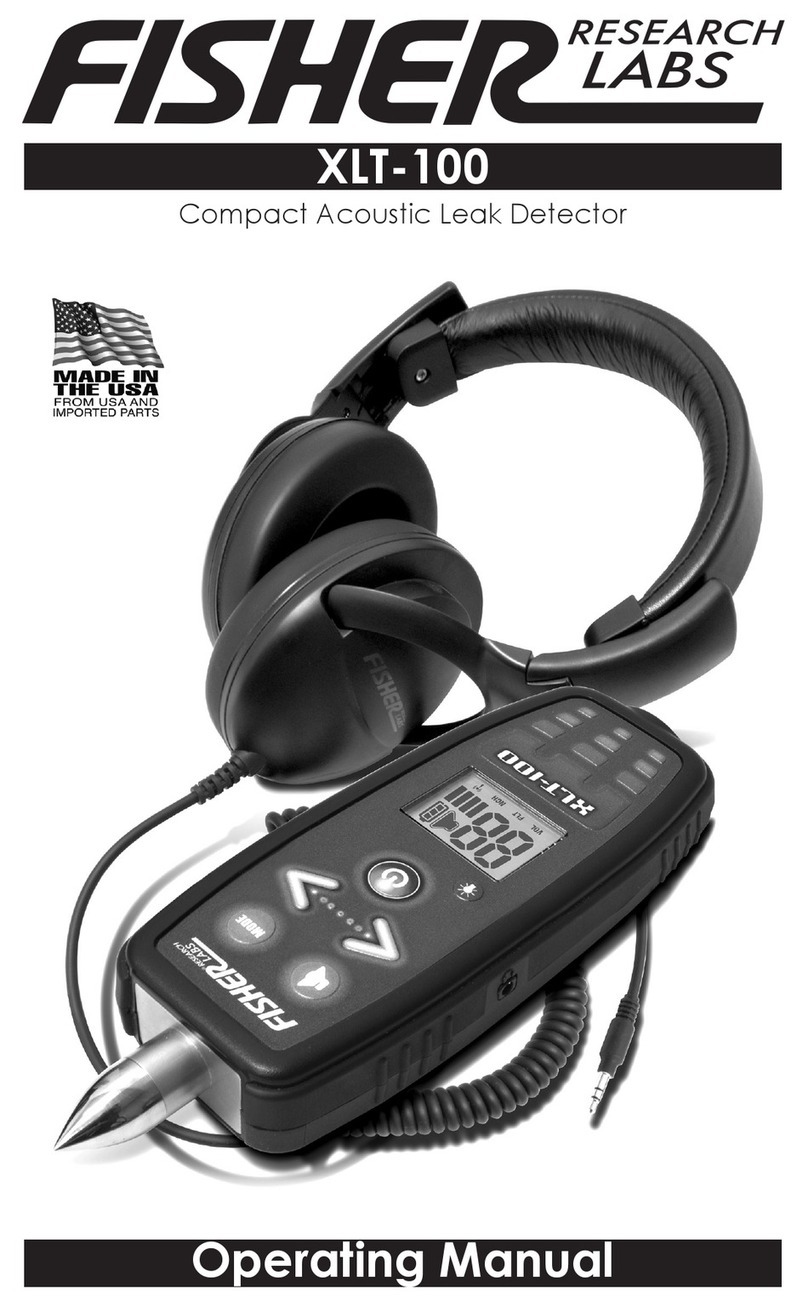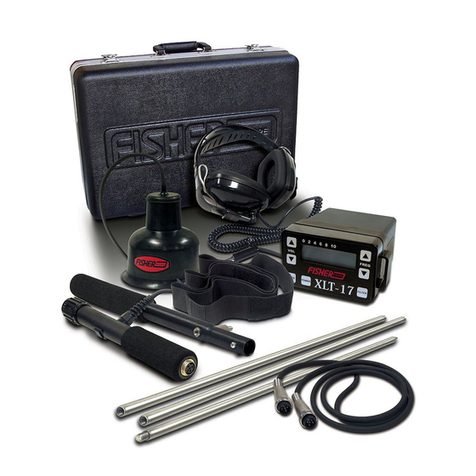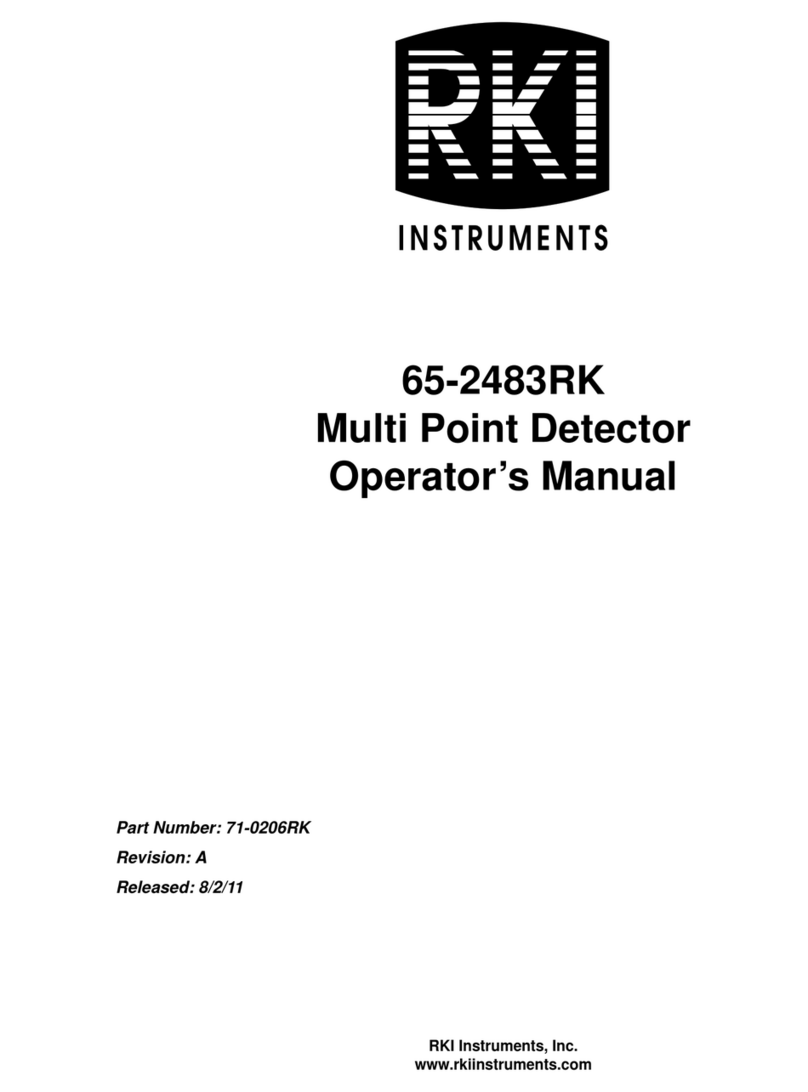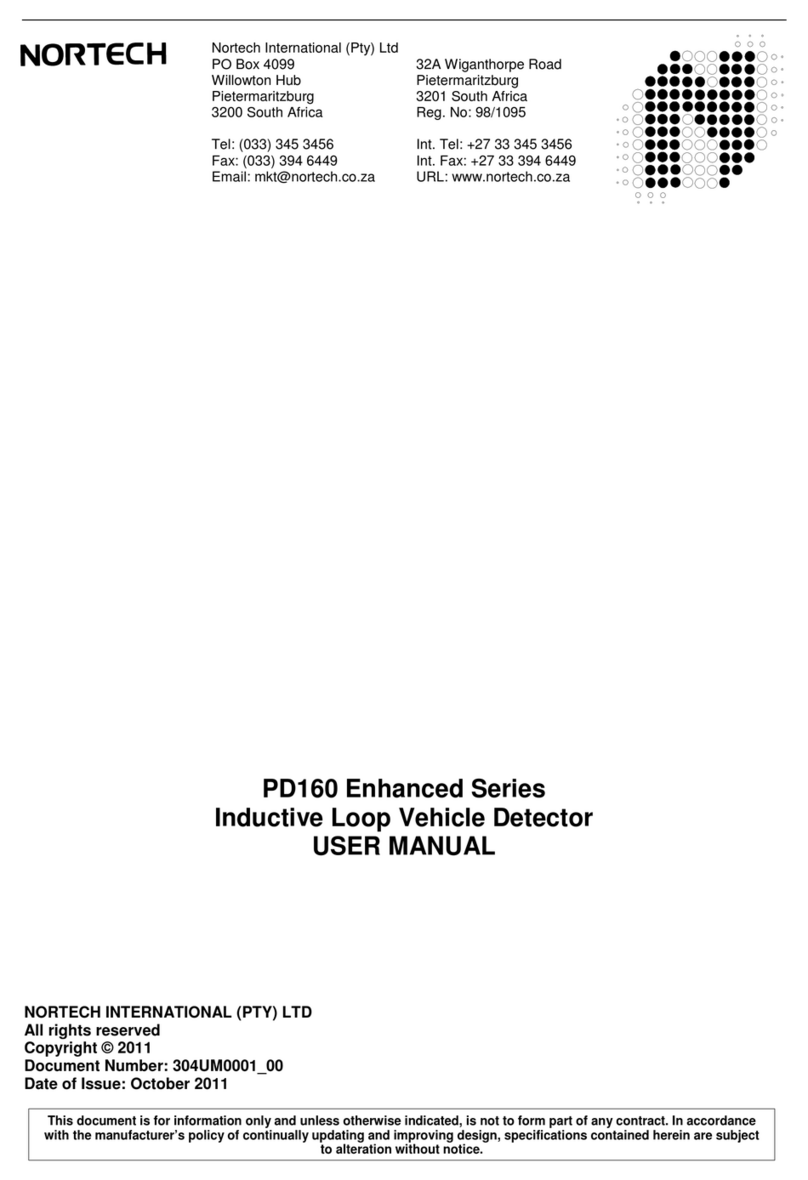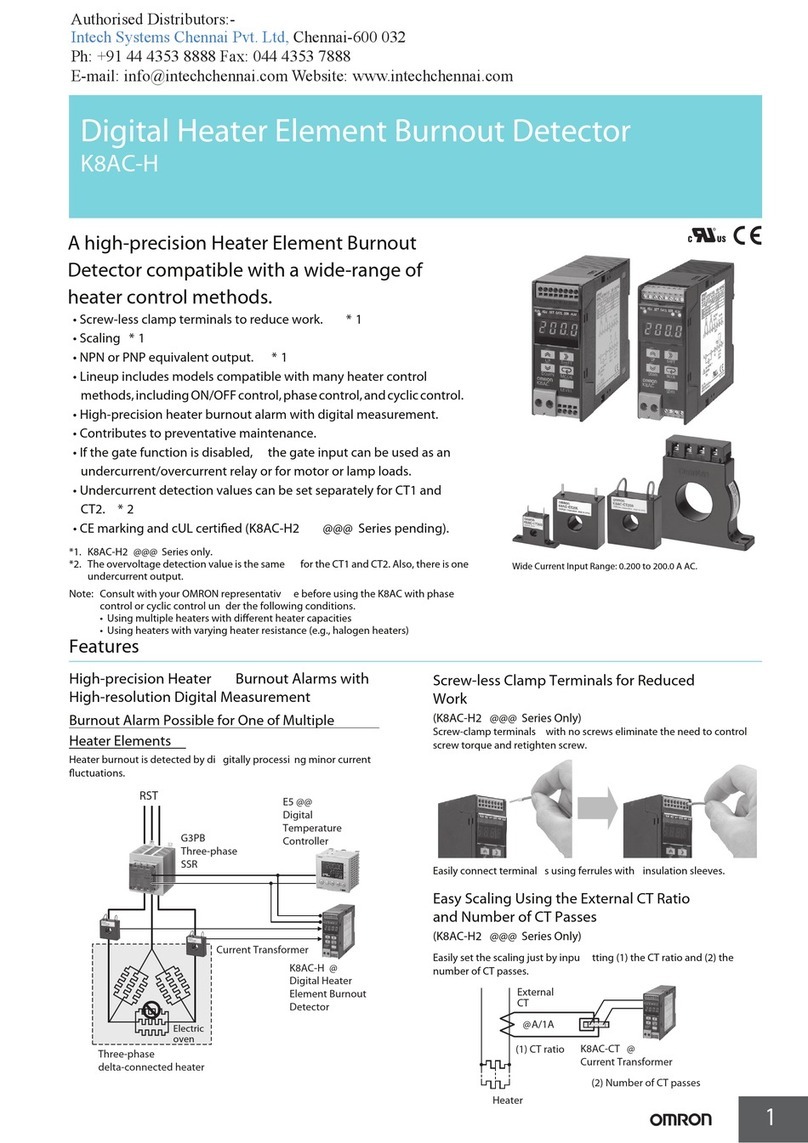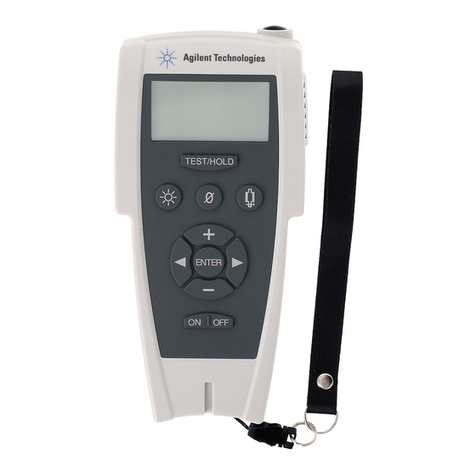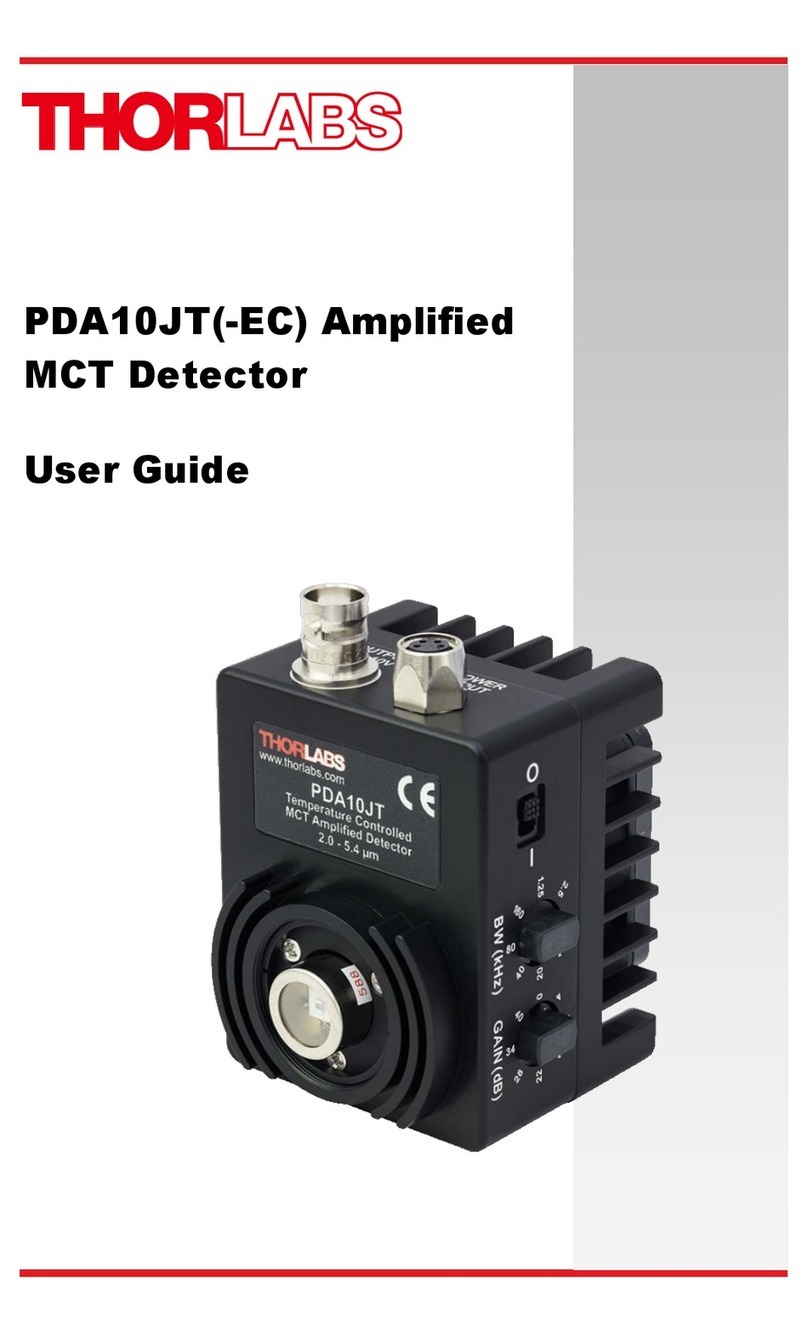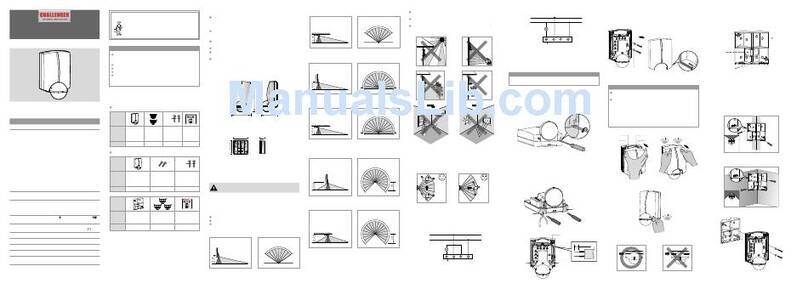pOwer
Turn the device on by pressing the
power button for approximately 1
second. To power the device off,
again press the power button for
approximately 1 second and release.
When muted, the XLT100 will power
off automatically after 5 minutes.
MOdes
Level Mode (Default on power-up)
In this mode, the XLT100 displays
the sound/vibration level. No mode
indicator is displayed in this mode.
VOluMe MOde
In this mode the user can increase
or decrease volume levels. To enter
Volume Mode, press the left/right
buttons to navigate to
Volume Mode, the VOL
mode indicator will be
displayed. The numeric
display displays the
current volume level
as a number between
0 and 99. After 1.5
seconds with no volume
adjustments, the device
will automatically revert
to Level Mode.
Filter MOde
To enter Filter Mode,
press the left/right
buttons to navigate to
Filter Mode, the FLT
mode indicator will be
displayed. In Filter Mode,
the user can select
from 8 different boost/
cut equalization lters
with center frequencies
at 500, 1000, 2000
and 4000 Hz. The
boost lters emphasize
frequencies around
the center frequency.
The cut lters will de-emphasize
frequencies around the center
frequency. Alternatively, the user can
select the all-pass lter, lter number
zero, which is the default lter. To exit
Filter Mode, and enter Notch mode,
press the Mode button.
nOtch MOde
To enter Notch Mode, press the
Mode button when in Filter Mode,
the NCH mode indicator will be
displayed. In Notch Mode, the user
can select the 50 Hz notch lter,
the 60 Hz notch lter, or no notch
lter. When using a notch lter, the
“notch” frequency will be ltered out.
To exit Notch mode and enter Level
Mode, press the Mode button.
Mute
The XLT100 sound output can be
toggled using the Mute button. The
Mute indicator shows when the
XLT100 is muted/unmuted.
Backlight
The XLT100 has a back light that can
be toggled using the Back Light button.
Batteries
The XLT100 uses two AA batteries.
When charge indicator becomes
low, batteries should be replaced.
The XLT100 will automatically turn
off if the battery voltage becomes too
low. To replace old batteries, use a
coin or at-head screw driver to turn
the battery door counter clockwise
until it comes off. The XLT100 has
special foam inserts in the battery
compartment these inserts may
prevent batteries from sliding out. If
this happens, gently tap the bottom
of the XLT100 on a at surface, and
batteries will slide out.
extensiOn rOds
Included extension rods (2-13”) May
be used in place of standard probe
tip when longer reach for contact
with facility is required. Extension
Rods can also be inserted into probe
holes over water line in turf areas.
sOMe pOtential
hazards
As the sensor and extension rods
are “pointed”; caution should be used
when operating or transporting the
device.
Always select the lowest volume
setting that is appropriate for each
leak sound analysis.
It is recommended to set device to
MUTE until positioned to sample for
leak noise, then set to OFF or MUTE
immediately after each sampling.
For safety reasons, do not use this
device near trafc or where other
dangers are present. This device
is to be used with interconnecting
cables/headphone cables shorter
than three meters.
Fisher Research Laboratory does
not warrant suitability to specic
use. Fisher Research Laboratory
shall in no event be liable for any
direct, incidental, consequential or
indirect damages.
OperatiOn chart
Back light
Power
Mute
Mode
Left/right
control
LCD display
Transducer tip

